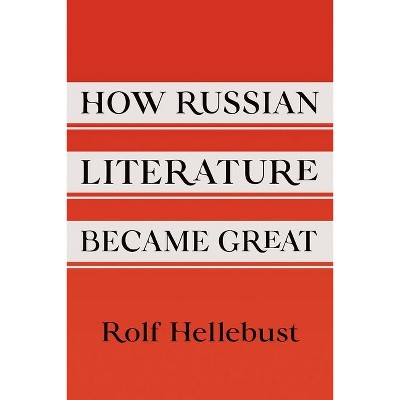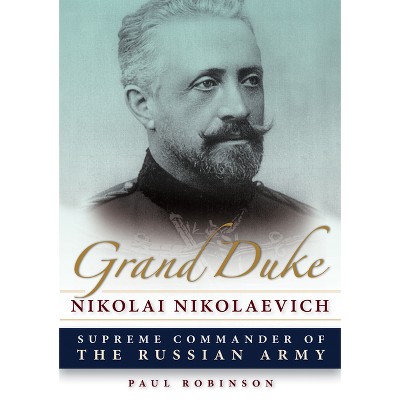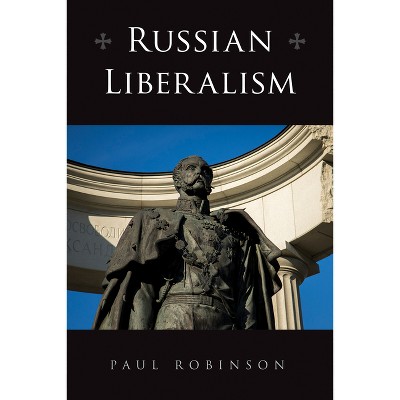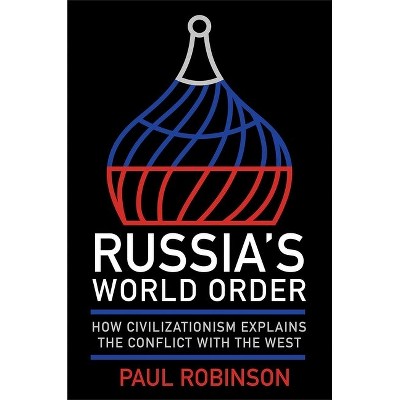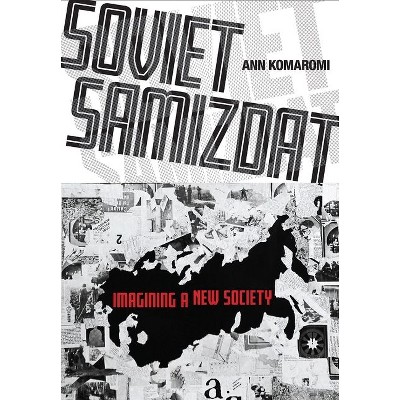Manufacturing Truth - (Niu Slavic, East European, and Eurasian Studies) by Elizabeth Astrid Papazian (Hardcover)

About this item
Highlights
- The Bolshevik Revolution uprooted not only the social and political systems of the Russian Empire, but existing artistic institutions and traditions as well.
- About the Author: Elizabeth Astrid Papazian is Associate Professor of Russian at the University of Maryland, College Park.
- 296 Pages
- Literary Criticism, Russian + Former Soviet Union
- Series Name: Niu Slavic, East European, and Eurasian Studies
Description
About the Book
The Bolshevik Revolution uprooted not only the social and political systems of the Russian Empire, but existing artistic institutions and traditions as well. Following the revolution, Soviet artists working in all different media had to respond to the urgent problem of how to make art relevant, even essential, to the revolutionary project undertaken by the Bolshevik Party. Focusing on the years 1921-1934, Manufacturing Truth explores the great upsurge in documentary methods and approaches in the arts and reveals how the documentary impulse influenced the development of Stalinist culture. Documentary approaches in literature and film became a central means for redefining the role of the artist, of art itself, and of the institution of art in the new post-revolutionary Soviet society.
The documentary impulse offered theorists and practitioners from a wide variety of artistic factions an opportunity to make their art relevant to the revolutionary project. Participation in this trend was supported not only by the avant-garde, which initiated it, but by representatives of artistic movements across the political and stylistic spectrum, in a variety of media. In using documents and documentary methods, writers and filmmakers of the era imparted to their artistic work a kind of authenticity, conveying a sense that they were producing an objective record of a reality that was being rapidly and radically transformed. At the same time, through the act of recording the building of socialism they became participants in the process, thus responding to a perceived historical imperative. As Soviet artists struggled toward the objectivity of historical processes, however, the tension between the two competing aspects of the documentary impulse--its evidentiary quality ("fact") and its discursive quality ("artifact")--grew into a contradiction. The anxiety of Soviet authors to be relevant to the revolution led them to the near effacement of authorship itself. Papazian analyzes the works of Sergei Tretiakov, Dziga Vertov, Maxim Gorky, and Mikhail Zoshchenko to reveal how the documentary impulse defined each author's individual artistic trajectory and led him inexorably to the socialist realist aesthetic.Book Synopsis
The Bolshevik Revolution uprooted not only the social and political systems of the Russian Empire, but existing artistic institutions and traditions as well. Following the revolution, Soviet artists working in all different media had to respond to the urgent problem of how to make art relevant, even essential, to the revolutionary project undertaken by the Bolshevik Party. Focusing on the years 1921-1934, Manufacturing Truth explores the great upsurge in documentary methods and approaches in the arts and reveals how the documentary impulse influenced the development of Stalinist culture. Documentary approaches in literature and film became a central means for redefining the role of the artist, of art itself, and of the institution of art in the new post-revolutionary Soviet society.
The documentary impulse offered theorists and practitioners from a wide variety of artistic factions an opportunity to make their art relevant to the revolutionary project. Participation in this trend was supported not only by the avant-garde, which initiated it, but by representatives of artistic movements across the political and stylistic spectrum, in a variety of media. In using documents and documentary methods, writers and filmmakers of the era imparted to their artistic work a kind of authenticity, conveying a sense that they were producing an objective record of a reality that was being rapidly and radically transformed. At the same time, through the act of recording the building of socialism they became participants in the process, thus responding to a perceived historical imperative.
As Soviet artists struggled toward the objectivity of historical processes, however, the tension between the two competing aspects of the documentary impulse--its evidentiary quality "fact" and its discursive quality "artifact"--grew into a contradiction. The anxiety of Soviet authors to be relevant to the revolution led them to the near effacement of authorship itself. Papazian analyzes the works of Sergei Tretiakov, Dziga Vertov, Maxim Gorky, and Mikhail Zoshchenko to reveal how the documentary impulse defined each author's individual artistic trajectory and led him inexorably to the socialist realist aesthetic.
Review Quotes
Very stimulating... well-written, deeply researched, theoretically sophisticated and evincing tremendous knowledge of both its topic and of scholarly literature written across eight decades in several different national contexts.
--John MacKay, Yale UniversityWell-written, well-argued, and well-researched.... as engaging as it is informative.
--Denise J. Youngblood, University of VermontWonderfully stimulating. Papazian demonstrates that the idea of documenting the present with an eye on both the future and the past would become inherently subversive in a political order whose chiefs insisted on continually rewriting history.
--Jeffrey Brooks, Johns Hopkins UniversityAbout the Author
Elizabeth Astrid Papazian is Associate Professor of Russian at the University of Maryland, College Park.
Shipping details
Return details
Trending Fiction






